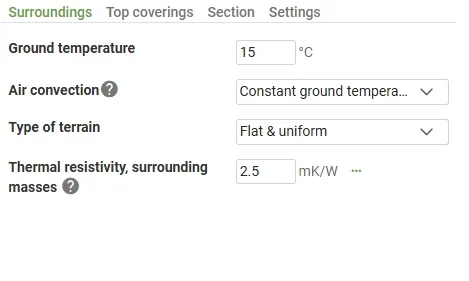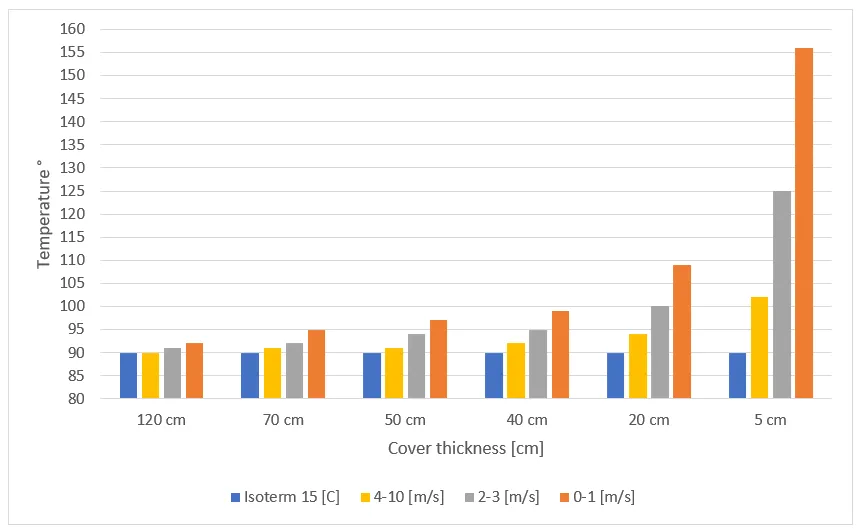Air Convection on Shallow Cable Trenches
In Grøft Design® calculations are made with an isothermal surface of the ground surface as default. This means that the ground temperature is constant, regardless of the energy supplied by the cables. For shallow cable trenches, however, this will easily be incorrect. Then you have to take into account that the ground will be heated, and some portion of heat will be dissipated from the ground surface by natural or/and forced convection. This is called «Air convection».
Air convection impacts how much heat that air currents can transport away from the ground surface. Traditional formulas (IEC 60287) assume “infinite” heat transfer and thereby constant ground temperature. Simulation makes it possible to achieve more realistic modelling, that can include exact wind strengths, sun heating, climate and weather data. Because of the complexity involved as well as limited studying, air convection is currently limited to a few choices that roughly represent the surroundings.
Cigre TB 640 “A guide for rating calculations of insulated cables” recommends to consider using the air temperatur data to characterizing the ambient soil temperatur for burial depth shallower than 0,5-0,75 m.
In Grøft Design® you have the following choices:
-
No wind (0-1 m/s) implies poor air transport and will result in the warmest ground temperature.
-
Slightly windy (2-3 m/s) gives a heat transport that in isolation would correspond to about 2-3 m/s wind.
-
Windy (4-10 m/s) gives a heat transport that in isolation would correspond to a varying 4-10 m/s wind.
-
Constant ground temperature (IEC 60287) implies unlimited heat transfer.
How to Change Air Convection

Example
To see the influence that convection has at different installation depths and wind strength, you can see the following graph. In the graph, two TSLF 24 kV 3x1x240 Al has been used and for each laying depth a current has been entered that gives 90 degrees at an isothermal surface. From the graph, you can see that already at 70-50 cm of cover, it becomes very important to take into account air convection if you compare it to areas where you assume no wind. And the closer you get to the surface the larger the deviation from the isotherm simulation are.
